Maximization of the first eigenvalue - domains with holes
This problem has been studied before by B. Maury and G. Billotey. You can find some infos here. I present briefly the problem below together with a FreeFem implementation.
Suppose we have a square and a number of circular holes in it. We wish to maximize the first eigenvalue of the Laplace operator with Dirichlet boundary conditions in terms of the position of the holes. As stated in the above reference, this corresponds to finding the optimal positions for a set of coolers such that a the cooling process is optimized.
Since we want to optimize the position of the holes, we wish to know the gradient of the first eigenvalue with respect to the coordinates of the centers of the holes. This can be done right away if we recall the shape derivative formula for the eigenvalues of the Dirichlet Laplace operator with respect to a perturbation $V$ of the boundary (see Henrot, Pierre, Variation et optimisation de formes) $$ \frac{d\lambda}{dV} = -\int_{\partial \Omega} \left(\frac{\partial u}{\partial n}\right)^2 V. n \ d \sigma.$$ When looking at the variation with respect to the position of only one hole, we see that the vector field $V$ only acts on the boundary of that hole. In order to find the partial derivatives we take $V$ to be constant equal to $(1,0)$ and $(0,1)$, respectively. We find that the partial derivatives with respect to the two coordinates are given by $$ \frac{d\lambda}{dx} = -\int_{\partial B} \left(\frac{\partial u}{\partial n}\right)^2 n_1 \ d \sigma,\ \frac{d\lambda}{dy} = -\int_{\partial B} \left(\frac{\partial u}{\partial n}\right)^2 n_2 \ d \sigma, $$ where $n_1,n_2$ are the components of the normal vector to the circular hole. Once we have these derivatives, it is straightforward to write a gradient descent algorithm. FreeFem offers a good framework for the computation of the eigenvalues and of the integrals needed in the gradient. Furthermore, the implementation is quite straightforward. Note that changing the shape of the holes does not affect the expression of the gradient (if we decide that we only perform translations of the holes in the course of the optimization). Below you can see some of the simulations made with FreeFem.
Below you can see the optimal configurations we obtained for circles of radii $r=0.05$ in a square of sidelength $2$. You can also visualize the evolution of the optimization algorithm in the corresponding movies. The FreeFem code for the algorithm is available here: optimal_holes.edp.
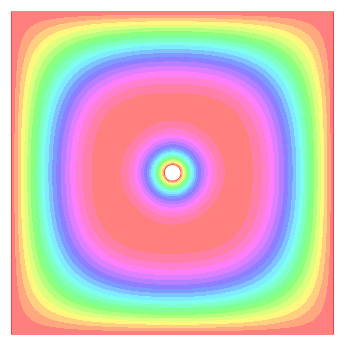 |
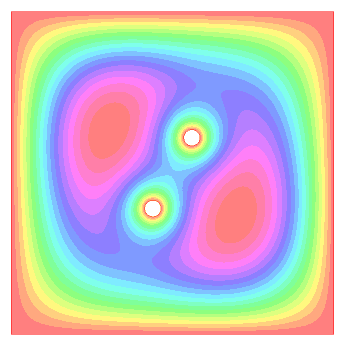 |
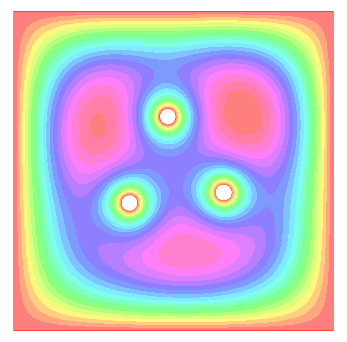 |
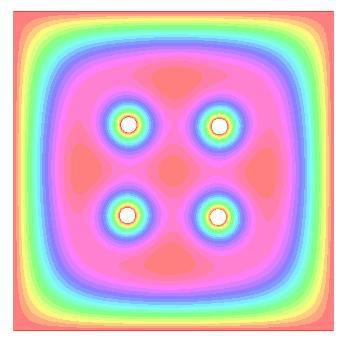 |
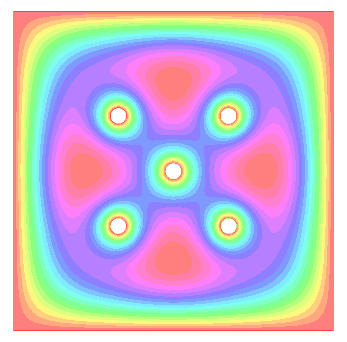 |
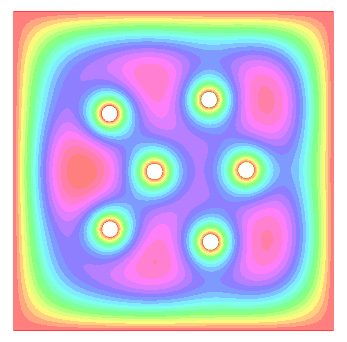 |
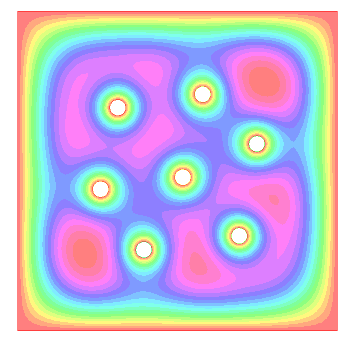 |
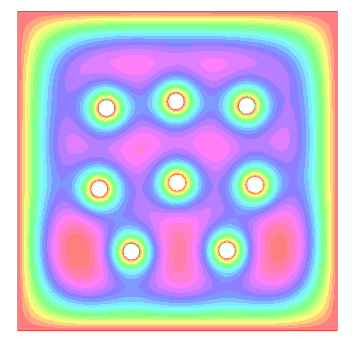 |
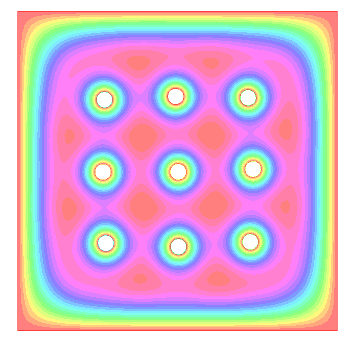 |
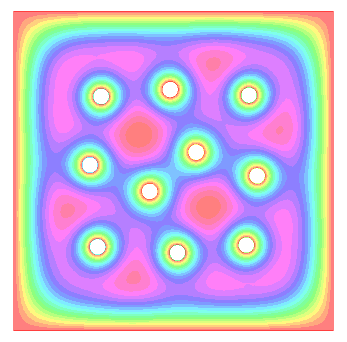 |
Created: Mar 2016